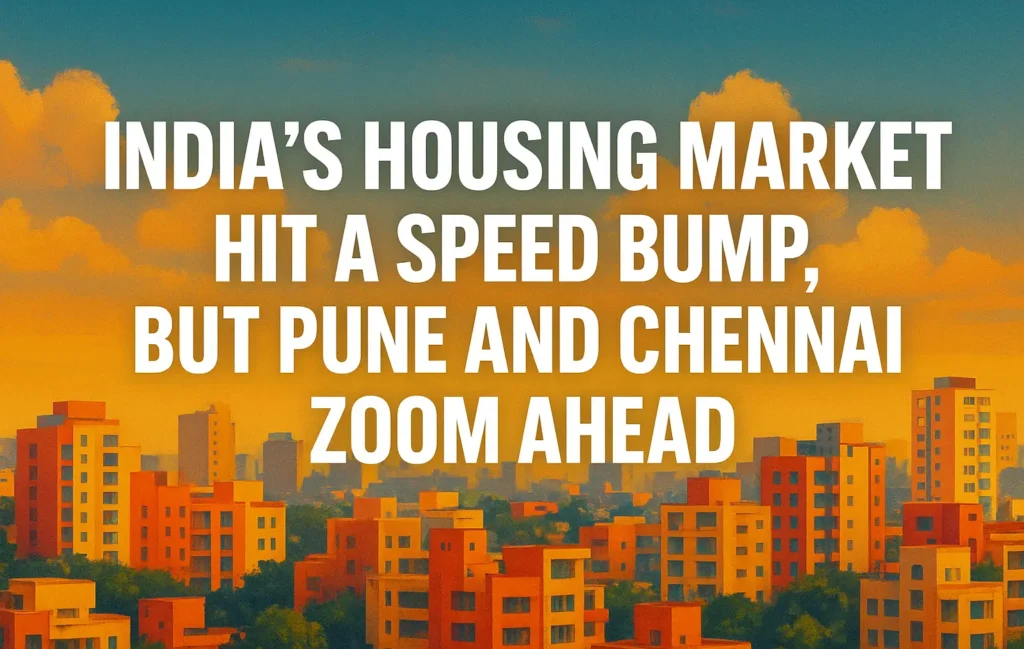The residential property market in India, often a sign of economic health, hit a noticeable slowdown in the first nine months of 2025. Data reveals that housing sales across the nation’s seven major cities saw a significant drop, confirming that the market is beginning to feel the pressure of higher costs.
From January to September 2025, the total number of homes sold across the top seven cities, which include Mumbai, Delhi-NCR, Bengaluru, Hyderabad, Chennai, Pune, and Kolkata, fell by 12% compared to the same period the previous year. This deceleration indicates that the rapid growth seen recently is moderating, pushing the market toward what experts call a more “balanced phase.”
What caused the slowdown?
The primary reason for this dip is straightforward: rising home prices. Over the past few years, property values have steadily increased, making houses less affordable for the average buyer. When prices climb faster than salaries, people naturally become more cautious about making such a large investment.
Compounding this affordability issue are several other factors. General economic uncertainty has made buyers hesitant to commit. Furthermore, seasonal influences like the monsoon and the typical lull before the major festive season also contributed to the softer sales figures.
Geographically, the slowdown was not uniform. Some of the largest markets were hit the hardest. Delhi-NCR saw the steepest drop in sales, plummeting by 29%. Kolkata also experienced a sharp decrease, with sales falling by 21%. Mumbai followed, with a sales decline of 16%.
The unexpected champions: Pune and Chennai
While the national trend pointed downward, two cities stood out as beacons of growth, successfully defying the slump: Pune and Chennai.
These two markets recorded double-digit growth, proving there is still robust demand in certain areas. Pune led the charge with an impressive 14% year-on-year growth in sales, closely followed by Chennai, which saw sales jump by 13%.
The success of these cities suggests that local economic drivers, such as steady job creation or a greater supply of homes at relatively more accessible price points, might be insulating them from the broader national headwinds affecting the larger, more expensive metropolitan areas. Together with Bengaluru and Mumbai, Pune and Chennai accounted for over 60% of all residential sales during these nine months, despite the combined volume of the top three cities showing a slight decline.
The price paradox and the luxury focus
In a peculiar twist, even as the volume of sales fell, the price of homes continued to climb. Across the seven major cities, home prices maintained their upward trajectory, with annual increases ranging from 6% to 16%. Kolkata and Chennai saw the most significant price growth, at 16% and 14% respectively, meaning that even where sales volumes dropped, the market value still appreciated.
This can be explained by a market shift towards the premium segment. Despite the overall slowdown, demand for higher-end homes, specifically those priced between ₹1.5 crore and ₹3.0 crore, actually saw significant growth. Developers, focused on higher profits, are launching fewer affordable and mid-range projects and instead concentrating on high-margin luxury developments. This focus on luxury housing is the key driver maintaining high prices even as total unit sales decline.
Looking ahead, experts believe the market is now settling into a balanced period. While overall sales may slow down, the prices of homes are expected to keep rising. This consistent appreciation will be fueled by sustained demand for luxury properties, limited available inventory in prime locations, and developers’ continued focus on the high-end market. The future of India’s housing market appears to be one where quality and value, especially at the premium level, drive growth, even as overall sales moderate.
Also read – Curtain Falls on a Film Era: Mumbai’s Iconic Studio Transforms into ₹3,000 Crore Luxury Homes
Disclaimer – This article summarizes findings from a third-party market report. Readers should verify details with primary sources or financial experts before making investment or purchasing decisions.


Write Your Comment